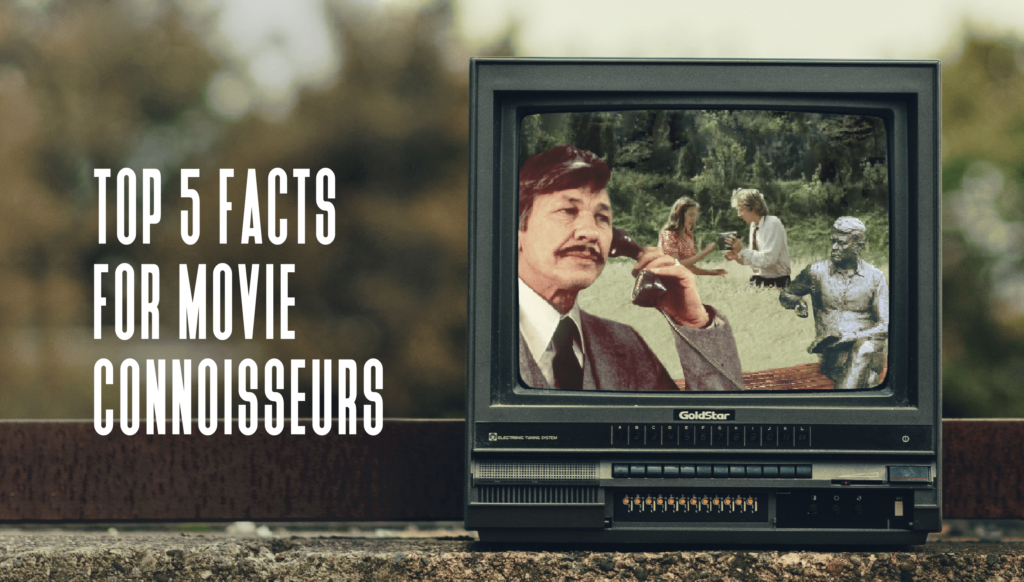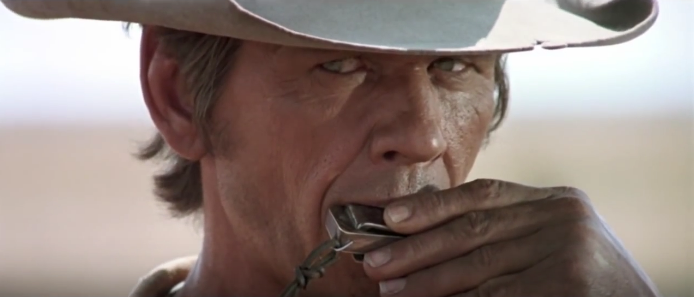2021.03.19

During the quarantine period, cinema became a real escape – many films and TV series were watched, and the best film masterpieces were remembered. Since movement between municipalities is officially allowed, the Druskininkai Tourism and Business Information Center invites you to a trip down memory lane, where you will feel just like in a movie theater. Druskininkai presents top 5 facts for movie connoisseurs that will add extra spice to a walk around the resort.
Why is it worth humming Ennio Morricone’s “spaghetti” western melodies while walking around Druskininkai? In which village near Druskininkai nut bread smells best? Did you know that the poem recited in the legendary Andrei Tarkovsky’s film “Stalker” was inspired by Druskininkai? What connects Tarkovsky, Banionis and Čiurlionis? Get acquainted with interesting facts and places, do not miss the opportunity to sit on a bench next to Lithuanian film grandmaster Donatas Banionis – a walk around Druskininkai will be full of gourmet cinema spirit! After you finish reading these top 5 facts, you will be wanting for more!

Karolis Bučinskis (Charles Bronson) and Druskininkai


Did you know that Lithuanian blood flowed through the veins of the famous Hollywood actor Charles Bronson? The real name of the famous actor was Karolis Dionyzas Bučinskis. He was born on November 3, 1921 in Ehrenfeld, Pennsylvania, USA, but his father, a true Lithuanian Tatar (Lipka) Vladislovas Bučinskis, was from Druskininkai. When the Russian-Japanese war broke out, he refused to serve in the tsar’s army and emigrated to the United States for fear of repression. There, Vladislovas became Walter Bučinskis, because it sounded more “American” and there he met his future wife, a first-generation Lithuanian emigrant, Mary Valinski.
Like most children he grew up with in Pennsylvania, Karolis did not speak English until he was a teenager. Even later in the army, his accent was so strong that his comrades considered him an immigrant from another country. However, Karolis was fluent in Lithuanian and Russian.
Charles’ childhood was extremely difficult – he was the 11th child out of 15, and his father died when Charles was just 10 years old. At the age of 16, he and his brother were already working in coal mines. The family lived in such poverty that once at school he had to wear his sister’s dress because he simply didn’t have other clothes.
For Charles, a happy ticket out of poverty was serving in the US Air Force – he took part in World War II, was injured and received the Purple Heart Award.
Then followed an impressive movie career. Charles Bronson became one of Hollywood’s most popular stars, one of the first to receive million royalties for a movie. Some movies were made specifically for him, as film critics wrote, “for the humble introvert, unable to watch the films in which he plays himself, and still not believing that this story of fame is really about him.”
He has starred in cult films such as “Once Upon a Time in the West”, “The Magnificent Seven”, and “Death Wish”. How did Bučinskis become a Bronson you may ask. Legend has it that Charles simply looked out the window of the Paramount studio and, seeing the street sign Bronson Avenue, simply chose it for himself.
One of the most famous characters of Karolis Bučinskis – a man with a harmonica, “Man with Harmonica”. Therefore, the next time you go to Druskininkai, you can put a harmonica in your luggage. And if Enio Moriconne’s western tunes can start spinning in the mind, don’t be surprised. This is the aura of Charles Bronson, whose roots are here in Druskininkai.







Take a seat next to Lithuanian film grandmaster Donatas Banionis
A sculpture of Donatas Banionis a theater and movie actor, next to the Grand SPA Lietuva. The sculpture is seated on a bench with a book in its hand, next to a standing winch,’which seems to invite all holidaymakers to sit down and relax.
“It has given me such a great honor, people will come from all over the world. I see them from Germany, from the United States. Everyone knows me more or less from movies. And today we are sitting here with my partner “, – D. Banionis spoke with his characteristic sense of humor, unveiling the sculpture in 2010. Its construction was initiated by Bronislovas Lubys, an honorary citizen of Druskininkai, who was a big fan of Banionis’ talent.
A sense of humor – this feature of D. Banionis was also remembered by Mindaugas Junčius, the author of the sculpture. As there is a monument to Mikalojus Konstantinas Čiurlionis near this sculpture, Donatas Banionis joked that there is still a lack of a sculpture for Arvydas Sabonis, and “everything will be all Lithuania”.
Actors Donatas Banionis have a special relationship with Druskininkai, where Mikalojus Konstantinas Čiurlionis, one of the most prominent Lithuanian artists, lived and worked. In 1975 together with director Robertas Verba, he made a documentary about this famous composer and artist. The actor spent a lot of his time touring and resting at the resort.
Probably the liveliest line of the film “I will depict the world as a great symphony …” is a unique shot in which Vladas Vildžiūnas’ sculpture dedicated to Čiurlionis is transported to Druskininkai. The movie can be seen here.








Druskininkai summer-inspired poem in A. Tarkovskis’ Stalker
Connoisseurs don’t need to be introduced to Andrei Tarkovsky – he is probably the most famous Russian director in the world. Ingmar Bergman equated his acquaintance with his first film with a miracle. A. Tarkovsky’s work is widely discussed, interpreted and studied. In one of A. Tarkovsky’s most famous movies, Soliaris (1972), based on a novel by Stanislav Lem, the main role of the psychologist-space traveler Chris Kelvin was played by the aforementioned Donatas Banionis. It is interesting that the Black Sea landscape inspired A. Tarkovsky to depict the ocean-like surface of the planet Solarium in the film. A little known fact is that M. K. Čiurlionis was interested in photography and also captured the Black Sea through a camera lens.
However, it is even more unexpected that in the most famous A. Tarkovsky movie “Stalker” the poem “Now summer is gone…” was written in Druskininkai:
The poem “Now summer is gone…” was written in 1967 by A. Tarkovskis’ father, the famous Russian poet of the 20th century Arsenijus Tarkovskis in Druskininkai while staying with his family in Druskininkų St.4
Here you will find the English version of the peom.






A village smelling of nut bread near Druskininkai


“That was a long time ago. Here, among the rye and potato fields, is a widely spread Lithuanian town, which as a child seemed to me to be the largest and most important city in the world. Paris, London or Rio de Janeiro were nothing compared to it! In our only street, behind the twisted fences, behind the white-painted shutters, an extraordinary life and passions unseen nowhere else flourished.
Thus begins the first Lithuanian tragicomedy “Nut Bread” (1977) directed by Arūnas Žebriūnas about the discord between neighbors Šatai and Kaminskai. We also get a glimpse of the first love of Andrius Šatas (actor Algirdas Latėnas) and Liuka Kaminsepė (actress Elvyitė) that smelled of nut bread.
Almost all of the film was shot in Žiogeliai village. Other locations include the park and school of Leipalingis. Žiogeliai is an old ethnographic village of Panemunių Dzūkai, surrounded by forests. Going for a a walk through a real Dzūkija forest by the river, there is a beautiful view of the Liškiava church and monastery on the other bank of the Nemunas. An authentic Dzūkija homestead has survived in the village, which was the house of the Šatai family in the movie. Algirdas Ničius, the movie’s artist had a really interesting job during the filming:
„We arranged the homestead a bit and built the fence. We created that house where the columns fall from the passions of the Kaminskai family. It was interesting to think and fun to work with. In the script it was written that the cow was grazing on the roof. Well, if that is what we must do, so be it. We brought some turf from Latvia, we covered the roof of the hut with it. A. Žebriūnas and me looked at that roof and then at the cow. We realized that we would not be putting a cow up on a roof.“
Rasa Dumčiūtė shared a special story about this film in the facebook group “Druskininkų krašto praeitis, geneologijos”. Her grandfather Vladas Jakavonis then worked as a watercraft driver in Druskininkai. He was assigned to go to Žiogeliai to “organize” the rain. He was helped by his son-in-law, the accountant of the “Drobė” factory Albertas Plieskis. Rasa still remembers this modest but lovely contribution her grandfather made. When watching the rain scene, she tries to empathize and see beyond the frame to get a glimpse of the grandfather and uncle who are not with us anymore.
When looking for new travel experiences, you will have the opportunity to forget the noise and dust of the city in Žiogeliai. You will not only be able to feel the magic of cinema, see the legendary homestead used in filming, but also try all the pleasures and entertainment of rural life. More information about rural tourism in Žiogeliai can be found here.






The script of “Herkus Mantas” was written in Druskininkai


The Lithuanian historical film Herkus Mantas (1972) is dedicated to the memory of the Prussian nation. Interesting thing to note – their language and culture were related to Lithuanians. Movie critic Saulius Macaitis stated that “Herkus Mantas” is the first significant historical Lithuanian movie that has overcome the lack of accurate factography and the lack of material base of the Lithuanian film studio.
The literary script of this film was created by Saulius Šaltenis in Druskininkai. he appeared in Pergalė magazine in 1971 and in 1972 Vaga publishing house published it together with the short story Riešutų duona. The author of the screenplay managed to create an expressive painting of Herkus Mantas, that was full of heroism and personality complexity.
Interestingly, in 1970 the script was quickly approved by the film studio and the Lithuanian Film Committee. However, Moscow censors stated that the subject was not part of the Soviet cinema’s plans, and the script was rejected. A few months later, the request was repeated, with a greater emphasis on ideological purpose, and this time it succeeded. In fact, the script was confirmed more because the economic crisis of Soviet cinema began and a sharp decline in viewers necessitated a lucrative feature film.
Still, the script itself became a real test for both the film studio and the director of the film. However it was not an easy to task. Šaltenis himself was quite critical when the movie came out, saying that “every artist has created his own world and his own atmosphere. The film studio and the director didn’t understand my idea. The Mantas Herkus you see on the screen is not the one I wrote about. As for the movie, I missed the medieval climate, the saturation of space, the atrocities in it. What annoyed me the most was the way of speaking, a lot of ballast was here.
Be that as it may, Druskininkai has always been a source of inspiration for creators – and cinema is no exception.
These are certainly not the only interesting top 5 facts about movie history related to Druskininkai.
For example in 1967 Polish movie star Polia Raksa was filmed in Švendubrė in the love and war story “Zosya”, and the city of Druskininkai has repeatedly become the filming location for various TV series. Do you know interesting facts about the history of cinema and Druskininkai? Write to komunikacija@druskininkai.lt
The top 5 facts for movie connoisseurs was Prepared by – Druskininkai Tourism and Business Information Center
